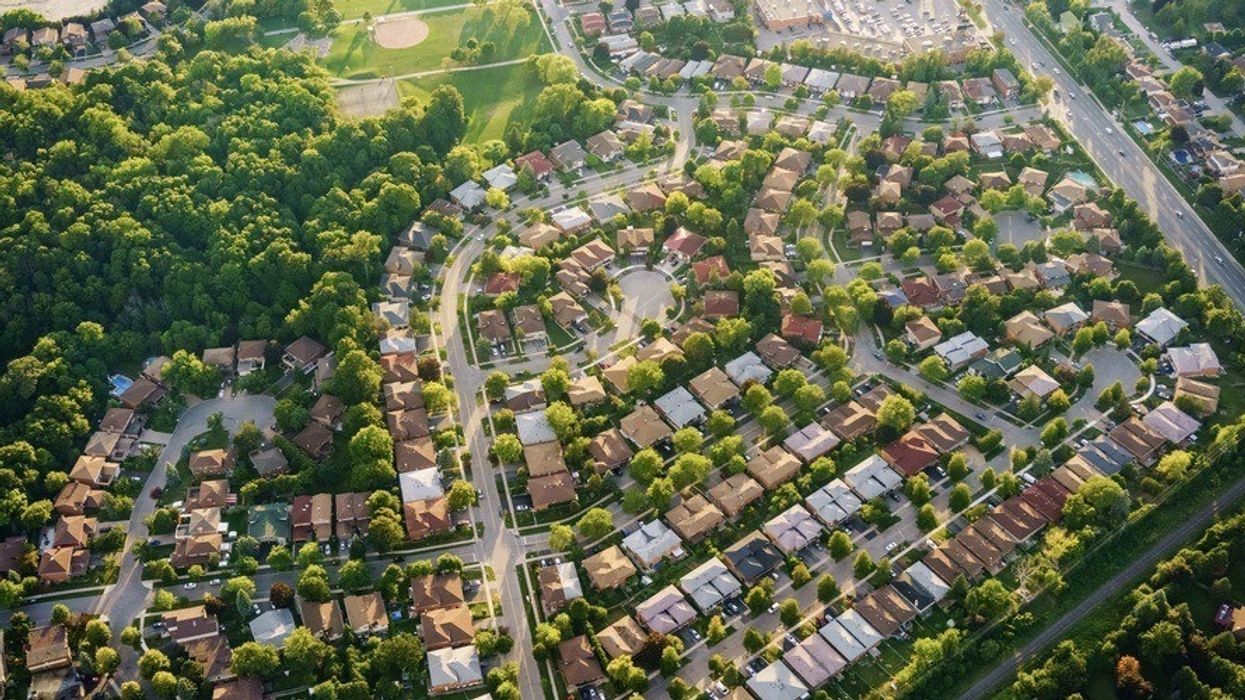Another year has come and nearly gone, and one thing that we've learned this year is the resilience of Ontario's real estate markets, as they've managed to stay hot despite the latest pandemic restrictions rolled out by the provincial government to slow the spread of COVID-19.
In fact, last month, there was a notable annual "uptick" in home sales across the province, with many regions reporting a record-breaking month for sales.
According to TRREB’s October housing market report, resale activity in the GTA showed no signs of slowing down, after having another record-setting month, during which, a total of 10,563 sales were made — a 25.1% jump from the 8,445 sales recorded in the previous October. The record-level sales were paired with record listings, with 17,802 recorded across the region compared to 13,053 in October of last year.
READ: Economists Expect Toronto Real Estate to See 5% Increase in Spring 2021: Survey
With just weeks left in 2020, Zoocasa took a closer look at housing competition across 35 Ontario real estate markets by reviewing sales and new listings data for each region for the month of October.
To determine which markets were the the sales-t0-new-listings ratio (SNLR) for 35 cities throughout the province (buyer's markets), Zoocasa calculated the sales-t0-new-listings ratio (SNLR) for 35 cities throughout the province. To reach this, the number of sales in a city is divided by the number of new listings.
A high percentage of over 60% indicates that many homes were sold compared to homes newly listed (sellers' market), while a lower percentage under 40% shows fewer homes were sold compared to homes newly listed (buyer's market).
According to Zoocasa, within the Greater Toronto Area (GTA), 14 out of 19 cities are currently sellers' markets, the remaining five are balanced. Outside of the GTA, all 16 cities were in the sellers' market territory, while no cities in the report were listed as buyer's markets.
READ: Toronto Had Nearly 11K More Home Starts Than Any Other Canadian City in 2020
Here in the GTA, 14 of 19 real estate markets strongly favour sellers, with Orangeville (SNLR of 105%), Whitby (SNLR of 89%), Burlington (SNLR of 88%), Milton (SNLR of 87%), and Caledon (SNLR of 85%) leading the ranking with high SNLR percentages over 60%, which indicates that more homes were sold compared to homes newly listed.
However, the remaining five markets in the GTA reviewed remain in a balanced market territory. With 3,514 sales and 7,823 new listings in October, the City of Toronto is among the five housing markets exhibiting balanced market conditions with an SNLR of 45%.
According to Zoocasa, this shows that housing competition has cooled since October 2019, when the SNLR was 66% and favoured sellers. That being said, it’s important to keep in mind that these figures are influenced by condo market activity where sales have declined amidst the pandemic while new listings increased by more than double (109%) year-over-year.
What's more, three of the five markets exhibiting balanced conditions are in York Region: Richmond Hill (SNLR of 54%), Vaughan (SNLR of 59%) and Markham (SNLR of 58%). The remaining market exhibiting balanced conditions is Mississauga, with 943 sales and 1,665 new listings and an SNLR of 57% in October.
“Currently, buyers are most interested in freehold properties with backyards, and it is common to see multiple offers on such listings given limited inventory,” says Claudio Castro, a Zoocasa agent in the York Region.
“Homes listed in the $1 million range are the most competitive, seeing that buyers are able to secure a 4 bedroom, detached property within the $1,100,000 – $1,400,000 range in York Region,” Castro notes that as long as COVID-19 remains a factor, this trend is expected to continue into the new year.
As you look outside of the GTA, Zoocasa says that buyers will face "stiff competition" in all of the 16 markets included in the analysis, particularly in four cities, where the SNLR is at or over 100% -- indicating that demand was much higher than new listings and buyers began to pick up inventory listed before October.
These markets were: Sudbury (SNLR of 100%), Niagara Falls (SNLR of 105%), Thunder Bay (SNLR of 108%), and St. Catherines (SNLR of 112%). With the exception of Sudbury, buyers faced even stiffer competition this year than they did in 2019.
You can read the full report here.






















